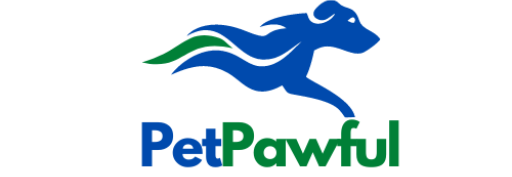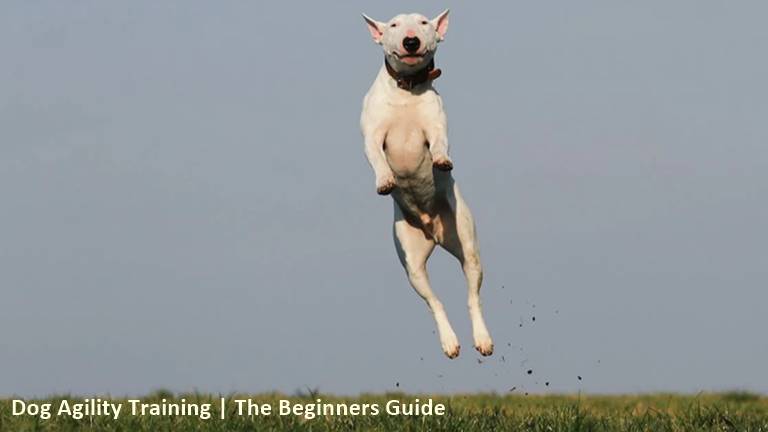Dog agility training is a fun and exciting activity for both dogs and their owners. It involves directing a dog through a pre-set obstacle course within a certain time limit. The course typically has between 14-20 obstacles, which can include tunnels, weave poles, jumps, and more. With the right training and guidance, any dog can learn to navigate an agility course.
For beginners, it can be hard to know where to start with dog agility training. That’s why this ultimate guide for beginners 2023 is here to help. It will cover everything from finding an appropriate place to train and setting up the course to teaching your dog the basic commands and techniques needed to navigate the obstacles. Whether you’re looking to compete in agility trials or just want to have fun with your furry friend, this guide has got you covered.
What is Dog Agility Training?
Dog agility training is a competitive sport activity where a dog is guided through a predetermined obstacle course within a specific time frame. The agility course typically comprises 14 to 20 obstacles, encompassing a variety of challenges like tunnels, weave poles, jumps, and contact obstacles such as A-frame, dog walk, and teeter-totter. The handler guides the dog through the course, using a combination of verbal cues, body language, and hand signals.
The Basics of Dog Agility Training
The basics of dog agility training involve teaching the dog to navigate the obstacles in the correct order and to complete the course within the time limit. This requires a combination of obedience training, physical conditioning, and agility-specific training. The handler and dog must work together as a team, with the handler providing clear and consistent direction while the canine maintains focus and follows the handler’s cues.
Training typically begins with teaching the dog basic obedience commands such as sit, stay, come, and heel. Once the dog has mastered these commands, agility-specific training can begin. This involves introducing the dog to the various obstacles and teaching them to navigate them in the correct order.
As the canine progresses in their training, they will learn to complete the obstacles more quickly and with greater accuracy. Handlers can use a variety of techniques to encourage their dogs, such as using treats, toys, or verbal praise.
Benefits of Dog Agility Training
There are many benefits to dog agility training, both for the dog and the handler. For the dog, this training provides an opportunity to exercise both their body and mind. It can help to improve their physical fitness, coordination, and balance, as well as their obedience and problem-solving skills.
For the handler, agility coaching can be a fun and rewarding way to bond with their dog. It can also provide a sense of accomplishment and pride when the dog successfully completes a course. Additionally, agility guidance can help to improve the handler’s own physical fitness and coordination.
Overall, dog agility training is a challenging and exciting sport that can provide numerous benefits for both the canine and handler. With the right training and dedication, any dog can learn to navigate an agility course with speed and precision.
Getting Started with Dog Agility Training
Choosing the Right Equipment
To get started with dog agility training, you will need to have the right equipment. The most important piece of equipment is a set of agility jumps. You can either purchase jumps or make your own using PVC pipes and connectors. Other essential equipment includes tunnels, weave poles, and a seesaw. You can purchase these items or make them yourself using instructions that can be found online. It is important to choose equipment that is appropriate for your dog’s size and skill level.
Preparing Your Dog for Training
Before beginning the training, it is important to make sure that your dog is healthy and fit enough to participate. Take your dog to the vet for a check-up and make sure that he or she is up-to-date on all vaccinations. It is also important to make sure that your dog is well-behaved and obedient. If your dog does not respond well to basic commands, such as “sit” and “stay,” you may need to work on obedience training before beginning this training.
Basic Training Commands
To begin agility training, your dog will need to know a few basic commands. These commands include “stay,” “come,” “sit,” and “down.” You can use positive reinforcement techniques, such as treats and praise, to teach your dog these commands. Once your dog has mastered these basic commands, you can move on to more advanced agility training techniques. In summary, getting started with dog training requires the right equipment, a healthy and well-behaved dog, and a few basic training commands. By following these simple steps, you can begin training your dog for the exciting and challenging sport of agility.
Advanced Dog Agility Training Techniques
Jumping and Hurdles
Advanced dog agility training involves teaching your dog how to jump over hurdles of varying heights and distances. This requires a lot of coordination and practice, but with patience and persistence, your dog can master this skill. One technique for training your dog to jump is to use a clicker and treats. Start with a low hurdle and gradually increase the height as your dog becomes more comfortable. It’s important to never force your dog to jump over a hurdle they are uncomfortable with.
Weaving and Poles
Another advanced agility technique is teaching your dog to weave through poles. This requires your dog to move quickly and with precision. Start with a few poles and gradually increase the number as your dog becomes more comfortable. One technique for training your dog to weave is to use a treat at the end of the poles to encourage them to move quickly through the obstacle.
Tunnels and Chutes
Tunnels and chutes are other advanced agility obstacles that require your dog to move quickly and with confidence. Start by introducing your dog to a short tunnel and gradually increase the length as they become more comfortable. It’s important to teach your dog to enter and exit the tunnel with confidence and to never force them through an obstacle they are uncomfortable with. Advanced agility training requires patience, persistence, and a lot of practice. It’s important to always train your dog in a positive and encouraging environment and to never force them to do something they are uncomfortable with. With time and practice, your dog can become an expert agility competitor.
Competitive Dog Agility Training
Competitive dog agility training is a thrilling sport that challenges both the dog and the handler. It involves directing the dog through a pre-set obstacle course within a certain time limit. Usually, the course comprises around 14 to 20 obstacles, such as tunnels, jumps, weave poles, and A-frames.
Rules and Regulations
In competitive dog agility training, there are rules and regulations that must be followed. These rules are set by different organizations, such as the American Kennel Club (AKC) and the United States Dog Agility Association (USDAA). The rules and regulations usually cover the following areas:
- Eligibility requirements for dogs and handlers
- Course design and obstacle specifications
- Scoring and penalties
- Time limits and course faults
It is important to study and understand the specific rules and regulations of the organization you plan to compete with. This will help you and your canine perform better and avoid penalties.
Preparing for a Competition
Preparing for a competition requires a lot of training and practice. It is important to work on the individual obstacles, as well as the entire course. Here are some tips to help you prepare for a competition:
- Train regularly with your dog
- Practice individual obstacles and the entire course
- Work on speed and accuracy
- Train in different environments and conditions
- Get feedback from experienced trainers and handlers
It is also important to prepare your canine physically and mentally for a competition. Make sure your canine is in good health and condition. Give your dog plenty of rest and hydration before the competition. And most importantly, stay calm and focused during the competition. Overall, competitive dog agility training is a fun and exciting sport that requires dedication, training, and practice. By following the rules and regulations and preparing well, you and your dog can have a successful and enjoyable competition experience.
Common Mistakes to Avoid in Dog Agility Training
While agility training can be a fun and rewarding activity for both the dog and owner, there are some common mistakes that beginners should avoid to ensure a successful training experience:
Skipping basic obedience training
Before starting the training, it is important that the dog has a solid foundation in basic obedience training. Without these basic skills, it will be difficult for the dog to understand and follow the commands necessary to complete the agility course.
Pushing too hard
It is important to remember that agility training should be a fun experience for both the dog and owner. Pushing the dog too hard or too fast can lead to frustration and burnout. It is important to start with simple obstacles and gradually increase the difficulty level as the dog becomes more comfortable and confident.
Not practicing enough
Consistency is key when it comes to a good dog training. It is important to practice regularly to reinforce the dog’s skills and build their confidence. Skipping training sessions or not practicing enough can cause the dog to forget what they have learned and make it difficult to progress to more advanced obstacles.
Using improper equipment
Using improper or poorly maintained equipment can be dangerous for both the dog and owner. It is important to use equipment that is specifically designed for agility training and to regularly inspect and maintain the equipment to ensure it is safe for use.
Not rewarding the dog
Positive reinforcement is an important part of agility training. It is important to reward the dog for their successes and progress to keep them motivated and engaged in the training process.
By avoiding these common mistakes, beginners can ensure a successful and enjoyable agility training experience for both themselves and their furry companion.
The Bottom Line
Overall, dog agility training is a fun and rewarding activity for both dogs and their owners. It provides a great opportunity for exercise, mental stimulation, and bonding between the two. However, it is important to keep in mind that dog training requires patience, dedication, and consistency. It is not a quick fix or a one-time activity, but rather a long-term commitment to the well-being of your dog.
Throughout this guide, we have covered the basics of dog agility training, from setting up the course to teaching your dog the various obstacles. We have also discussed the importance of safety and proper training techniques to avoid injuries to both the dog and handler.
Remember to always start with the basics and progress at a pace that is comfortable for your dog. Use positive reinforcement and rewards to encourage good behavior and never punish or scold your dog for mistakes. With time and practice, your dog will become more confident and skilled, and you will both enjoy the benefits of this exciting activity.
It is also important to keep in mind that not all dogs are suited for agility training. Some breeds may be more prone to certain health issues or may simply not have the temperament for this type of activity. Always consult with your veterinarian and consider your dog’s individual needs and abilities before starting agility training.


